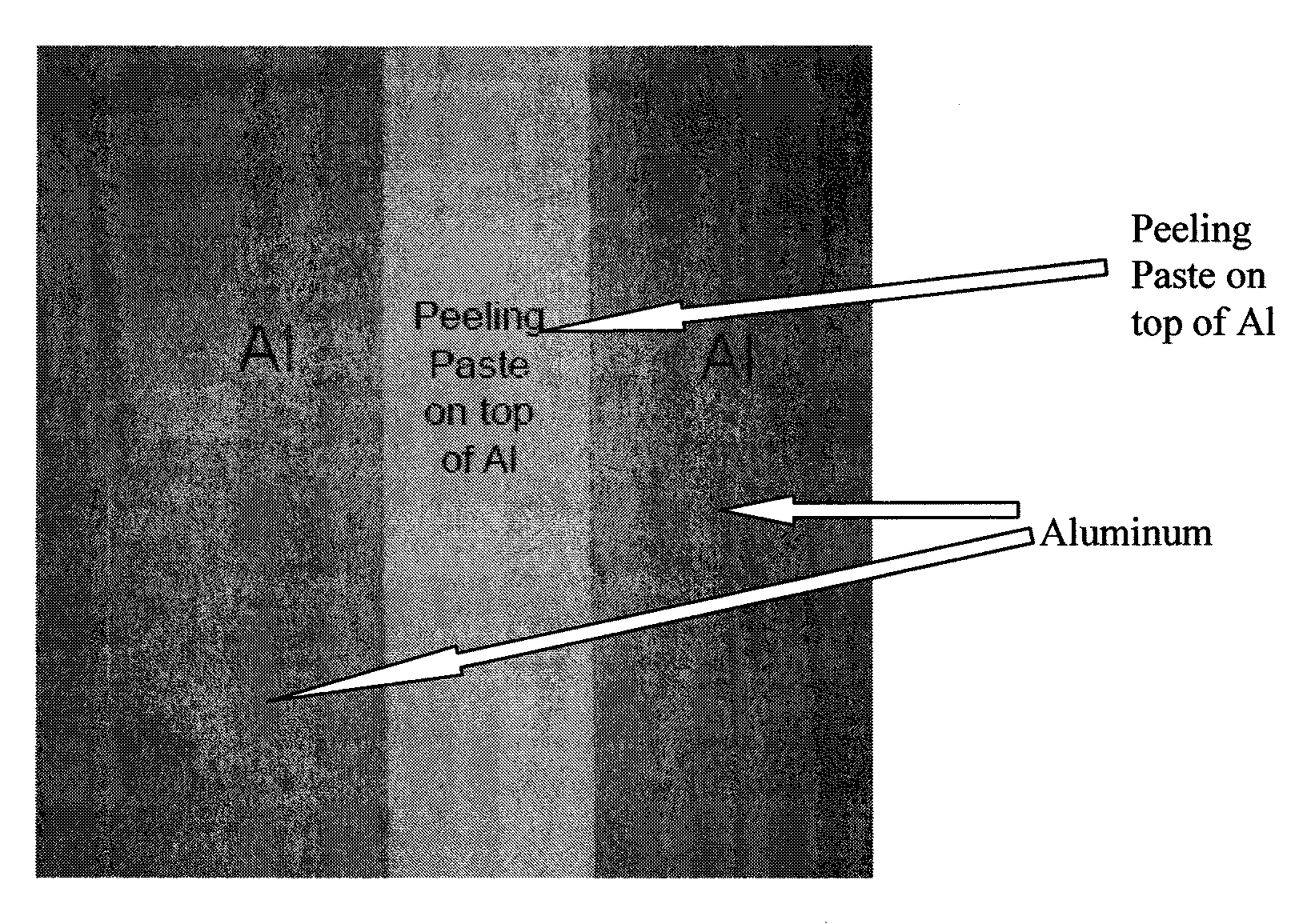Method for applying full back surface field and silver busbar to solar cell
a solar cell and back surface field technology, applied in the direction of basic electric elements, electrical apparatus, semiconductor devices, etc., can solve the problems of inability to print, dry, and fire aluminum, and the relative poor solderability of aluminum is a barrier, and the method of printing, drying, firing aluminum is also inapplicabl
- Summary
- Abstract
- Description
- Claims
- Application Information
AI Technical Summary
Benefits of technology
Problems solved by technology
Method used
Image
Examples
Embodiment Construction
[0037]As used herein, unless otherwise indicated for specific case, all percentages (%) are percent by weight. Further, unless otherwise indicated, all particle sizes or particle diameters stated herein are d50 particle diameters measured by laser diffraction. As well understood by those skilled in the art, a d50 diameter represents the size at which half of the individual particles (by weight) are smaller than the specified diameter.
[0038]The application relates to a method for applying back contact silver busbar to the full aluminum back surface field (BSF) of a solar cell. As described in more detail below, the method involves first printing and drying a full aluminum backing layer on the back side of a solar cell substrate to form a full aluminum layer and then applying a peeling paste (described in more detail below) to the full aluminum layer in areas where silver busbars are desired. A front contact silver paste is applied to the front side of the solar cell substrate, and bo...
PUM
 Login to View More
Login to View More Abstract
Description
Claims
Application Information
 Login to View More
Login to View More - R&D
- Intellectual Property
- Life Sciences
- Materials
- Tech Scout
- Unparalleled Data Quality
- Higher Quality Content
- 60% Fewer Hallucinations
Browse by: Latest US Patents, China's latest patents, Technical Efficacy Thesaurus, Application Domain, Technology Topic, Popular Technical Reports.
© 2025 PatSnap. All rights reserved.Legal|Privacy policy|Modern Slavery Act Transparency Statement|Sitemap|About US| Contact US: help@patsnap.com



